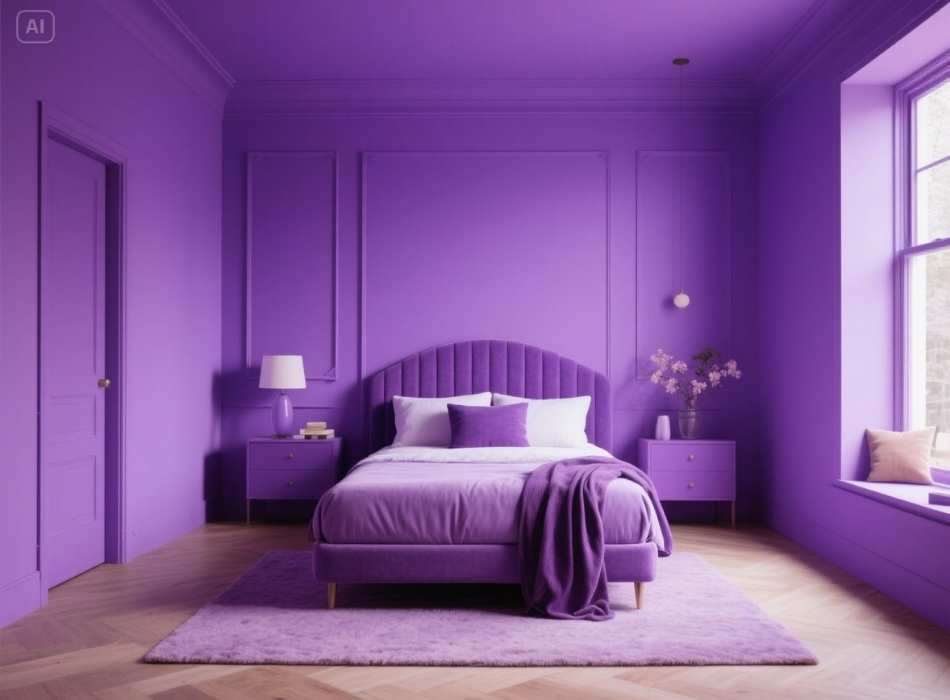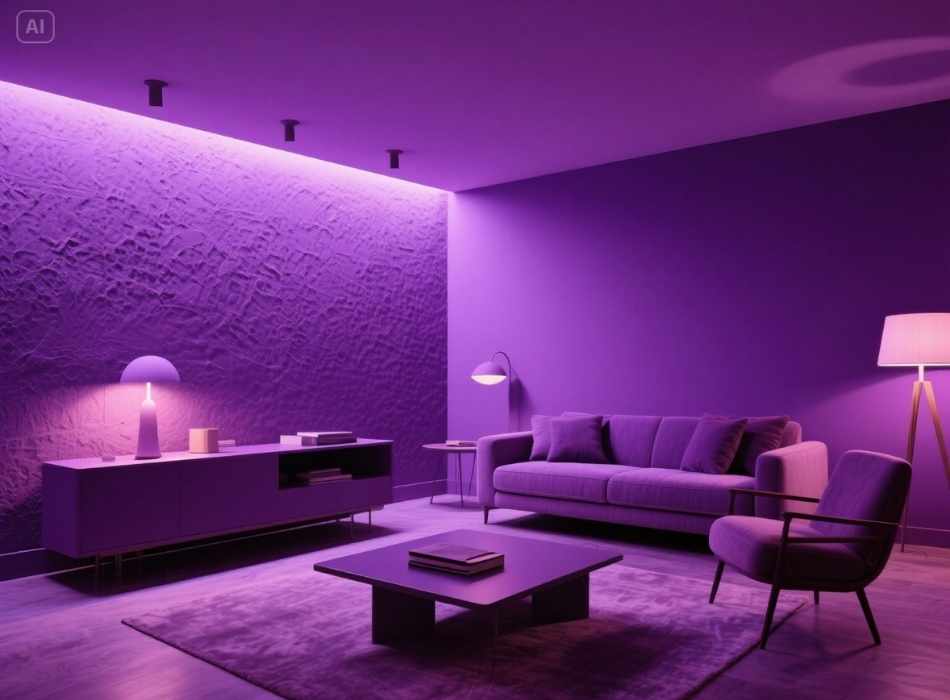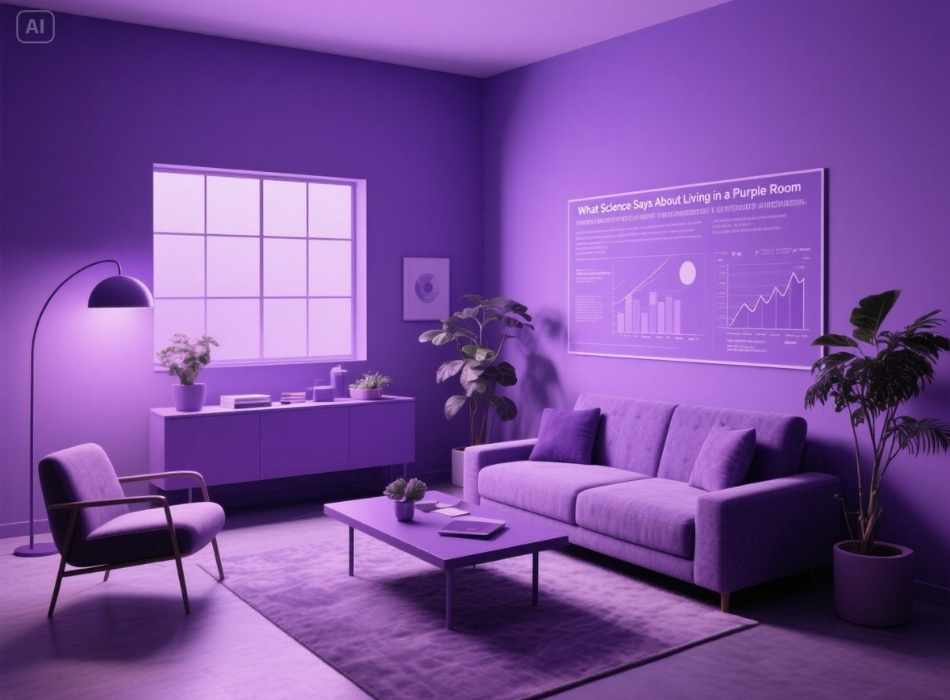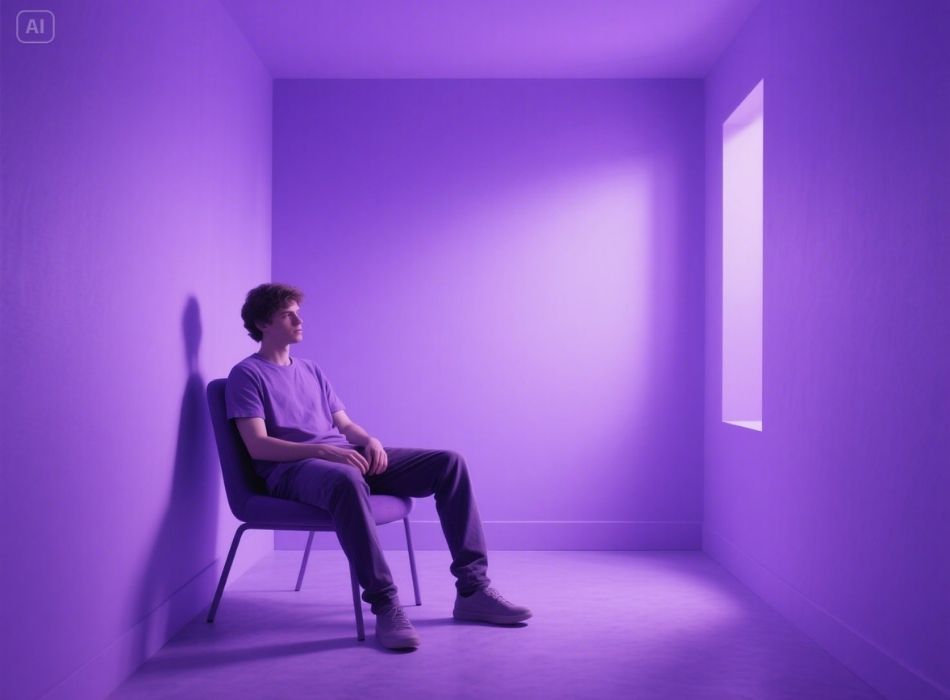Colour psychology significantly influences how humans perceive and interact with their environment. The colours surrounding us can affect our mood, behaviour, and productivity, from calming blues to energizing reds. One shade that often piques curiosity is purple. What happens when someone spends time in a purple room? How does this captivating colour affect the mind and body? This blog explores the psychological, emotional, and practical effects of purple spaces, backed by science and expert insights.
Why Is Purple Such a Fascinating Color?
Purple has long been associated with royalty, luxury, and creativity. Historically, it was one of the rarest and most expensive dyes, making it a symbol of wealth and power. Today, purple is popular in everything from branding to interior design, thanks to its versatility and rich symbolism.
But why does purple evoke such strong feelings? The secret lies in its position on the colour spectrum. Purple is created by blending red (a stimulating colour) with blue (a calming colour), resulting in a complex hue that can both energize and relax. This duality is what makes purple so intriguing and impactful in a room.
The Psychological Impact of Purple Rooms

The colour purple has a unique ability to evoke a wide range of emotional responses. Let’s break down its psychological effects:
1. Encourages Creativity and Imagination
Purple is often associated with creativity, intuition, and artistic expression. Studies show that exposure to purple can stimulate the brain’s creative centres, making it an excellent choice for spaces like art studios, classrooms, or brainstorming areas. For individuals who struggle with generating new ideas, a purple environment can be a subtle but effective way to inspire out-of-the-box thinking.
Example: Google’s offices famously incorporate splashes of colour, including purples, to encourage employees to think creatively and innovate.
2. Promotes Calmness and Relaxation
The blue tones in purple contribute to its calming effect, making it a popular choice for bedrooms and meditation rooms. When used in soft, muted shades like lavender, purple can create a serene atmosphere that promotes relaxation and better sleep.
Pro tip: Balance purple with neutral tones to avoid overwhelming the senses. For instance, pairing lavender walls with white or beige furniture can create a soothing and harmonious space.
3. Evokes a Sense of Luxury and Extravagance
Deep purples, like violet or plum, have a long-standing connection to opulence and sophistication. Adding purple accents to a room can elevate its aesthetic, making it more luxurious.
Example: High-end hotels frequently use rich purple upholstery or drapery to give their interiors a lavish, upscale ambience.
4. Sparks a Feeling of Mystery and Spirituality
Purple is often linked to spirituality and mysticism. Its colour invites introspection and deep thinking, making it ideal for rooms dedicated to prayer, meditation, or yoga. The darker shades of purple, in particular, can evoke a sense of mystery and intrigue.
Color Intensity Matters
It’s important to remember that different shades of purple can produce different psychological effects:
- Lavender and Lilac: Calming, soothing, and gentle.
- Amethyst or Violet: Energizing, creative, and imaginative.
- Deep Purple or Plum: Luxurious, mysterious, and intense.
Potential Downsides of a Purple Room

While purple has many benefits, it’s not without its challenges. Overusing purple or selecting the wrong shade for a room’s purpose can lead to unintended effects.
1. Overstimulation in Bright Purples
Bright and vivid shades of purple, like electric violet, can be overstimulating if used excessively. This might make the room feel overwhelming, especially in relaxing spaces.
2. Potential for Loneliness
Purple’s association with introspection and spirituality can occasionally result in feelings of isolation if overused. Consider incorporating contrasting colours like warm yellows or neutral tones to counteract this.
Practical Tips for Designing with Purple
If you’re considering a purple room, here are some practical design tips to make the most of the colour:
1. Start Small
You don’t have to go all in with purple walls. Try adding purple through accent pieces like throw pillows, rugs, or art.
2. Layer with Neutrals
Balance the boldness of purple with neutral colours like grey, white, or beige to create a harmonious design.
3. Add Natural Light
Purple rooms look best in spaces with plenty of natural light, which helps prevent the colour from feeling too heavy or dark.
4. Use Different Textures
Mixing textures, such as velvet purple cushions or silk curtains, adds depth and interest to the room while enhancing its luxurious feel.
What Science Says About Living in a Purple Room

Recent studies in colour psychology have examined the effects of purple on mood and productivity. Research suggests that purple can:
- Reduce stress and promote mental clarity.
- Boost creative problem-solving abilities.
- Encourage deep thinking and introspection.
However, scientists also caution that individual responses to colour are subjective and influenced by personal preferences and cultural associations.
Is a Purple Room Right for You?
Whether you want to add a touch of sophistication to your living room or create a calming sanctuary in your bedroom, purple has much to offer. It’s a versatile colour can adapt to various moods and design styles, making it a meaningful choice for your space.
However, as with any design decision, balance is key. Use purple thoughtfully and complement it with other colours and textures to create a functional and inviting space.
Embrace the Power of Purple
From promoting creativity to fostering relaxation, purple can transform any room into an enchanting, purposeful space. Whether you’re a designer looking to make a bold statement or want a room that reflects your unique personality, purple might be the secret ingredient you’ve been searching for.
Are you looking to create your purple haven but unsure where to start? Share your ideas or ask questions in the comments below. Together, we can help you design a space that feels as inspiring as it looks.e emotions, creativity, and focus. Learn the benefits and best practices for designing with this bold color.











